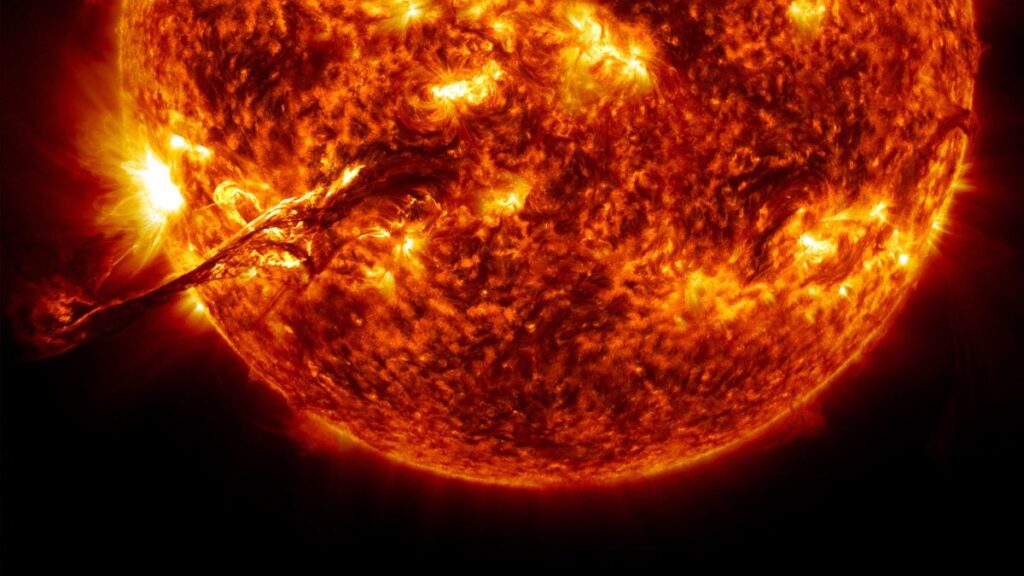In 1999, NASA’s TRACE mission detected bright patches made of plasma on the Sun. Scientists called it “moss” due to its resemblance to the greenery on Earth. The bright moss appears around and above a group of sunspots, lower-temperature regions that appear as dark spots on the Sun’s surface, in imagery.
Mystery of Solar Moss
Nearly 2,000 km above the Sun’s surface, the moss has temperatures of around one million degrees Celsius, whereas the surface below is just around 6,000°C. A long-standing mystery has been how heat transfers upward from the Sun’s body to the moss.
New Insights from NASA’s Hi-C and IRIS
New findings from NASA’s High Resolution-Coronal Imager (Hi-C) sounding rocket and Interface Region Imaging Spectrograph (IRIS) mission provide initial clues into understanding the superheating mechanism behind the Sun’s moss patches. The data, accompanied by 3D simulations, has revealed that the flow of electric currents on the Sun’s surface within a tangle of magnetic lines creates the moss.
The findings, led by Souvik Bose — research scientist at Lockheed Martin Solar and Astrophysics Laboratory — and Bay Area Environmental Institute, along with NASA’s Ames Research Center, have been published this week in the Nature Astronomy journal. Bose commented, “Thanks to the high-resolution observations and our advanced numerical simulations, we’re able to figure out part of this mystery that’s stumped us for the past quarter of a century. However, this is just a piece of the puzzle; it doesn’t solve the whole problem.”
The findings about the heating mechanism behind the moss patches on the Sun provide some answers to big-picture questions about heat transfer mechanisms within the Sun’s structure. They attempt to explain another well-known but less-understood dynamic of the Sun — why its corona, or outer atmosphere, is hundreds of times hotter than its surface.
Moss tends to form between and over two atmospheric layers of the Sun — the chromosphere and the corona. Above the moss are the famous loops of energy — large plasma filaments called coronal loops — visible rising from the Sun in images. Underneath the sponge-like moss, on the Sun’s surface are the sunspots — the areas of the Sun with slightly lower temperatures due to the tangling of the magnetic lines on the Sun.
Key Role of Sunspots
Sunspots play a key role in forming and heating coronal loops and moss. They form when very strong magnetic fields rise from the Sun’s interior to the surface. The Sun consists of charged particles, hot gases and plasma, which flow along its magnetic lines, continuously affected by it. When strong magnetic fields make themselves known, they prevent the upward movement of hot gases from the Sun’s interior by convection. Thus, the heat remains trapped, lowering the temperature slightly on the Sun’s surface and forming planet-sized tiny dots — the sunspots.
Future Missions and Research
NASA’s Hi-C sounding rocket will launch again this month, hopefully imaging and studying another mossy patch above the Sun for further data and analysis. Many missions are studying these systems within our life-giving host star, including ISRO’s Aditya-L1 and NASA’s upcoming Multi-slit Solar Explorer (MUSE) mission.
